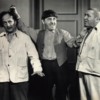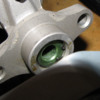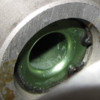This problem started a couple of years ago, but really became an issue this past summer. My stock brakes (seems like both fronts at this point, possibly back end, can't tell) are engaging on their own, to the point where if I'm driving and put it in neutral, it will come to a stop. It is directly affected by heat. On a 100+ degree day last summer it was so bad one day I questioned whether I'd be able to make it home without catching them on fire. Thank God I was only a block from the house.
Funny thing is, after I park the car, and come back later after it's cooled, they are much much better, and the car is driveable again. When jacked up, and the car is cool, you can turn the wheels by hand and feel the brakes dragging some.
Things I've done that didn't help: changed the brake fluid, checked the master cylinder pushrod length, and even installed a gutted proportion valve.
Any idea what could be the problem? The brake fluid I changed did look nasty (don't know when it was last changed, I'd had the car 4 years myself before doing it), are my caliper pistons all mucked up? Could my master clyinder be a problem, even after verifying it's correct length?
Original Post




